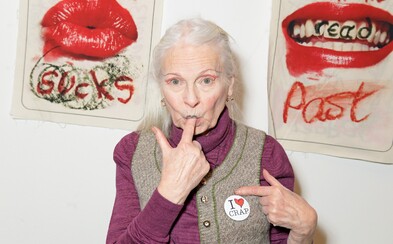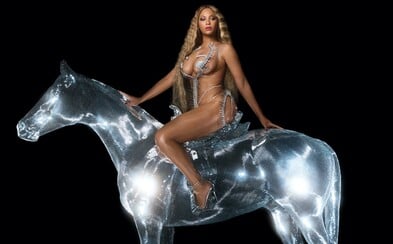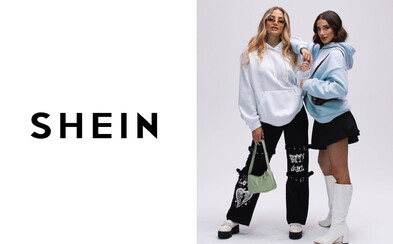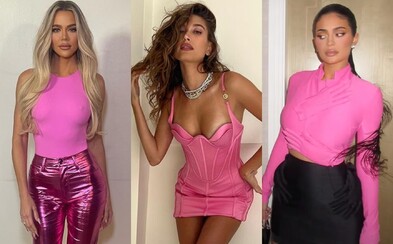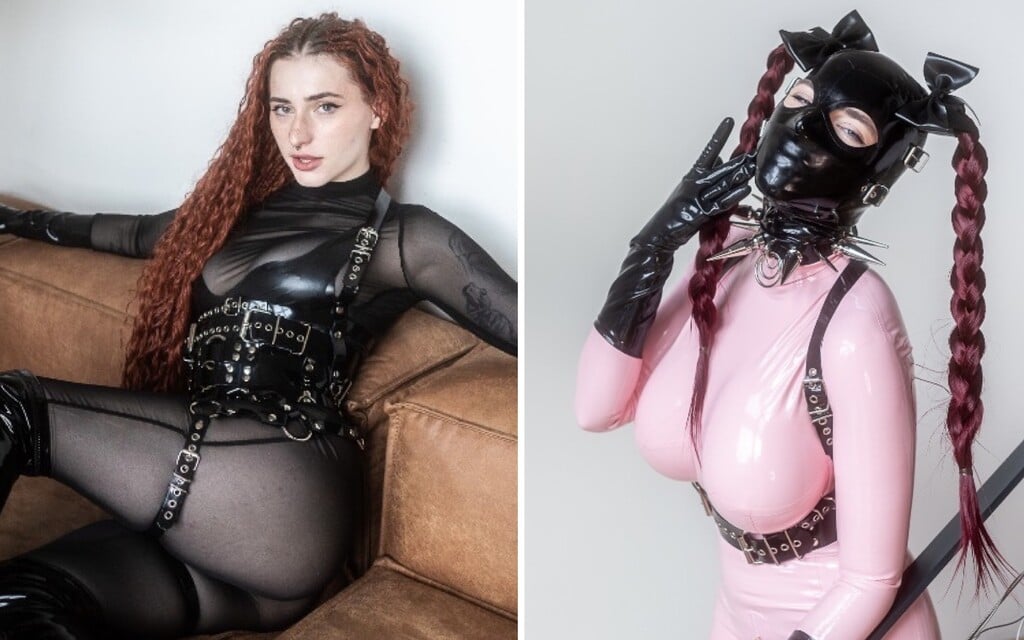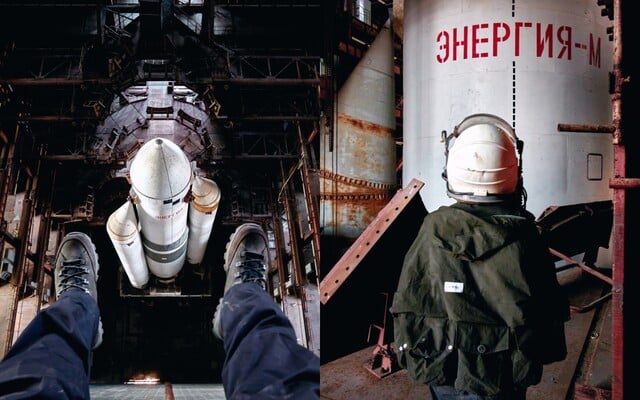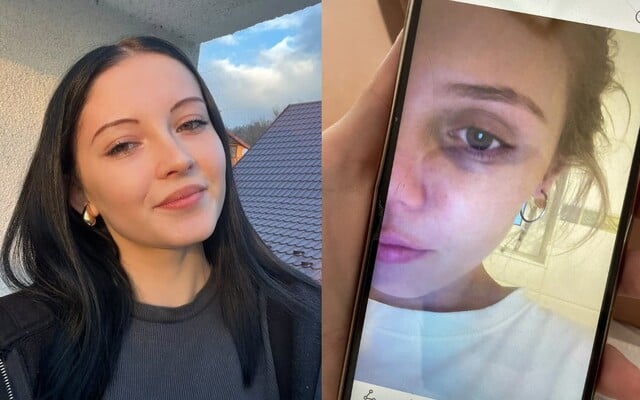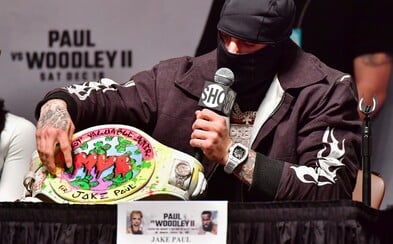 Even celebrities have fake clothes or accessories. Jake Paul with Richard Mille watches or fake diamonds 6ix9ine
Even celebrities have fake clothes or accessories. Jake Paul with Richard Mille watches or fake diamonds 6ix9ine
Even celebrities have fake clothes or accessories. Jake Paul with Richard Mille watches or fake diamonds 6ix9ine
Even celebrities have fake clothes or accessories. Jake Paul with Richard Mille watches or fake diamonds 6ix9ine
Top 10 Most Replicated Luxury Brands. Can You Tell Which One is Fake and Which One is Real?
Reselling companies can't seem to avoid scandals. Well-known luxury secondhand companies are facing criticism for having fake goods appear and sold on their websites. CNBC's investigation has revealed a few flaws in the TRR authentication process.
If problems persis, please contact administrator.

Only Chanel knows what the real Chanel is like. Can you tell the difference? Qualified authenticators around the world should be able to distinguish real from fake. However, with the ever-improving production of fake pieces, one can't be sure of anything.
Reselling companies, which are facing scandals for selling fake clothes, shoes or accessories to their customers, are also aware of this issue. In addition to negative reviews and a wave of criticism, the brands themselves have participated in the fight against "verified" fakes. Few people would expect the information that came to light after an investigation in a well-known reselling company.
- Which products and brands are the most replicated.
- Where to buy guaranteed luxury pieces.
- What scandal are reselling companies facing.
- Who was sued by the Chanel brand and why.
- What was revealed by a CNBC report about The Realreal company.
- Why the main authenticator left the company.
- How to prevent counterfeits from reaching an unsuspecting customer.
- Why do we actually buy knock-offs consciously?
- What trend has taken place among the young people on TikTok.
- Whether an app can distinguish a fake handbag from a real one.
- How to self-distinguish a knock-off from a real piece.
The most replicated luxury brands
According to the statistics from the U.S. Customs and Border Protection, almost 34,000 counterfeit shipments were held at the US border in 2018. Most of them coming from China and Hong Kong. Clothes and accessories became the most replicated. Then there are shoes, watches / jewelry, handbags / bags and wallets, electronics, consumer goods and medicines.
Most imitations are created from luxury brands due to their global prestige and the possibility of earning quite decent money, especially with ignorant customers. The British financial company H&T Pawnbrokers has published the top 10 most replicated brands on the market. Most likely, you won't be surprised by the brand names.
2. Balenciaga
3. Rolex
4. Ray-Bans
5. Gucci
6. Cartier
7. Vivienne Westwood
8. Chanel
9. Louis Vuitton
10. Fendi
Gucci, Chanel, Louis Vuitton ... Handbags that you can find on every street-market, in every Chinese store or on dubious online websites and social media trading accounts. The flood of fake products, which are increasingly difficult to be distinguished from the real ones, is constantly growing.
If you long for a luxury brand product, you should only buy from their official website / store, or from a brand-verified and certified partner. Third option is platforms with luxurious second-hand pieces. They have built their reputation on the authenticity of the products they sell, and people all over the world buy hard-to-find pieces from them. But what if you have doubts about the authenticity of an expensive piece bought from a "luxury thrift shop"?
Prestigious online luxury thrift shops
If you ever owned a luxury piece, but got tired of it after a while, most likely you've passed it on to someone else. World luxury secondhand platforms such as Yoogi’s Closet, Fashionphile, Rebag, Bag Borrow or Steal, What Goes Around Comes Around, The Realreal or Vestiaire Collective are also getting into reselling and they've brought the business with unwanted valuable pieces to perfection. Well, almost.
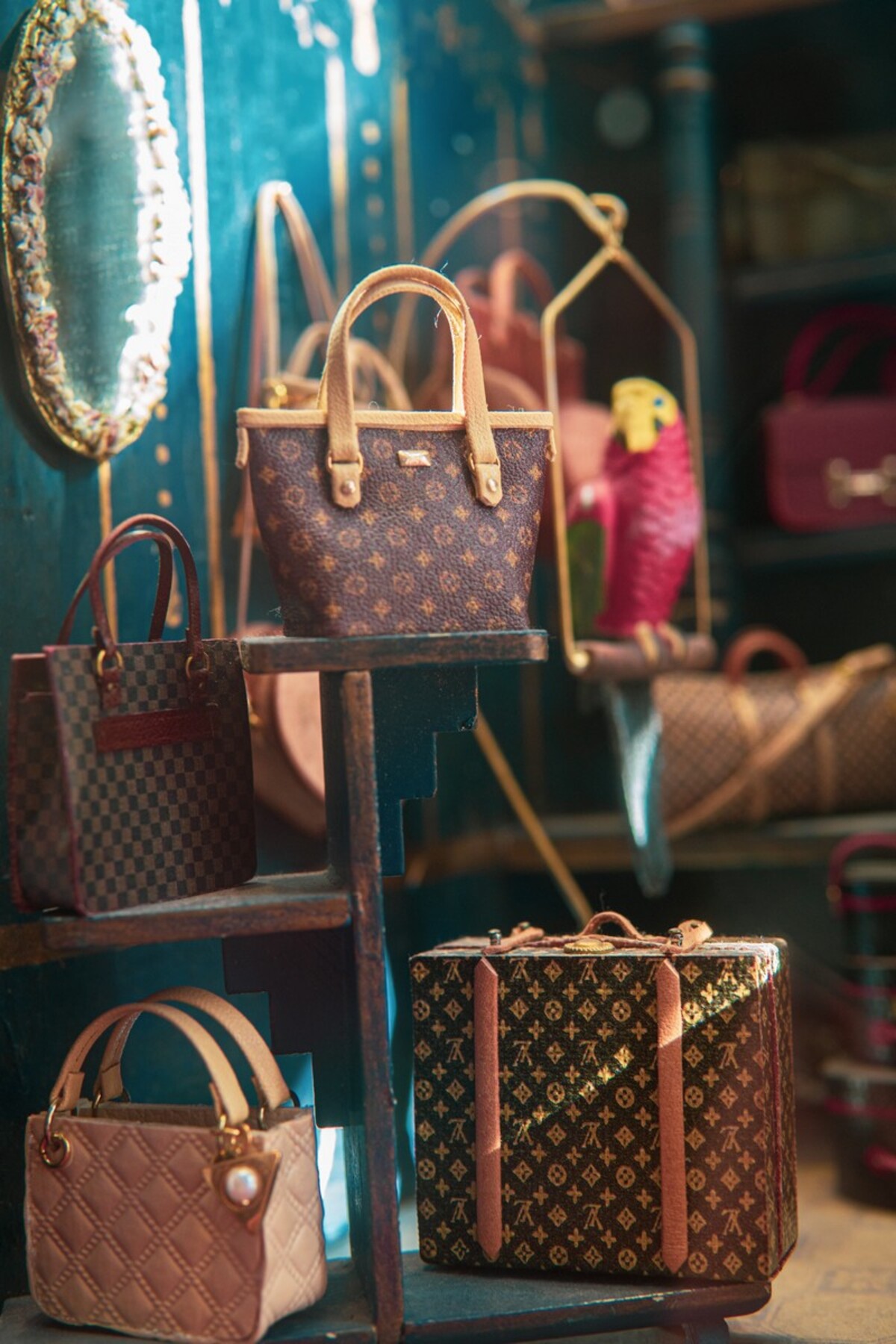
The great thing about such sites is that each item goes through an authentication process that companies guarantee on their websites. Their experts are trained, they go through several courses, so few people have doubts about the authenticity of the luxury pieces sold on such sites. And yet. Particularly the What Goes Around Comes Around, The Realreal and Vestiaire Collective platforms are facing several allegations for selling fake products, which their experts have identified as genuine.
Only Chanel knows, what the real Chanel is like
Three years ago, the French fashion house Chanel has sued the vintage retailer What Goes Around Comes Around for misleading customers and selling counterfeit products. Chanel strictly protects its trademark and does not cooperate with the WGACA platform, so according to the Chanel brand, the mention of #WGACAChanel on secondhand platform posts is misleading and creating a false impression of product verification by the luxury brand itself.
However, WGACA defends the allegations, arguing that there is nothing confusing in their business model that could wrongly affect the customer. "Our team has 25 years of training and knowledge in identifying genuine product and we offer only product that has been fully vetted by us," said WGACA founders Seth Weisser and Gerard Maoine.
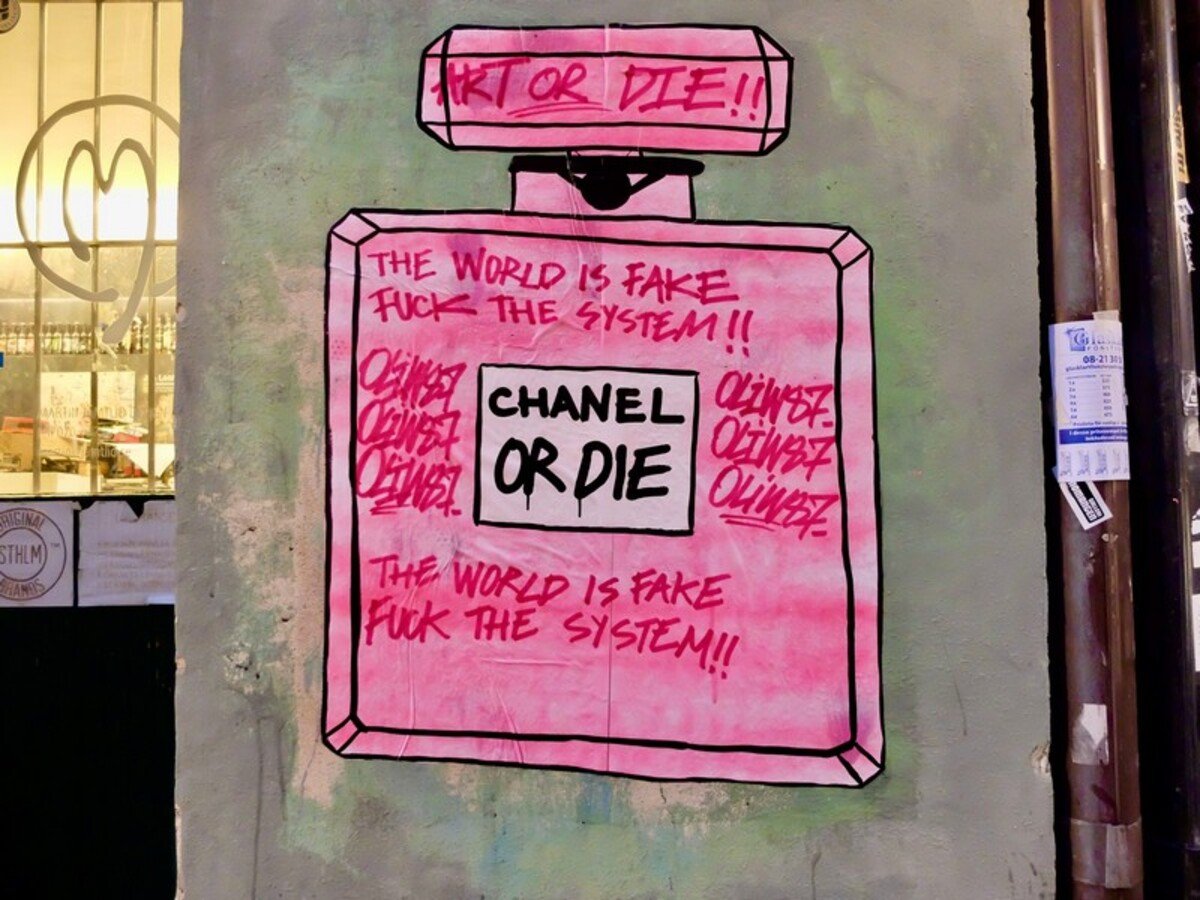
Another platform that has been criticized by the luxury fashion house, but also the public, is The Realreal. The secondhand company states that each item passes through most rigorous authentication process in the marketplace, performed by authenticators with many years of experience.
Chanel does not agree with Realreal's assertion of employing experts trained in the authentication of Chanel products. The French luxury brand states that the knowledge of their genuine goods authentication belongs only to the Chanel brand.
The Realreal. Really Unreal.
Ten years ago, Julie Wainwright came up with the idea to set up a platform with luxury secondhand pieces. The company has grown over time and today The Realreal's offices are located in 16 US cities, 11 of which also have retail stores. However, the apparent prestige and credibility are gradually failing due to accusations from hundreds of deceived customers and also former employees.
Pozrite si tento príspevok na Instagrame
Three years ago, the American TV station CNBC launched an investigation into The Realreal company, finding some serious information. Not only didn't all luxury products pass through the hands and eyes of real experts, but also the copywriters who lacked authentication training and were primarily employed to write texts on the company's website.
Only the most risky products were verified by the authentication team. These were mainly Chanel, Louis Vuitton, Yeezy and handbags, wallets and cases from Prada. On the other hand, Prada and Hermes shoes and clothing, hats, scarves, belts and shoes from the Gucci brand went to the copywriters for inspection instead. "It’s really hard for someone to properly authenticate something when they’re not probably the best qualified to be even doing that in the first place. And they’re being rushed to hit a goal," former employee Chanice Parchment told CNBC.
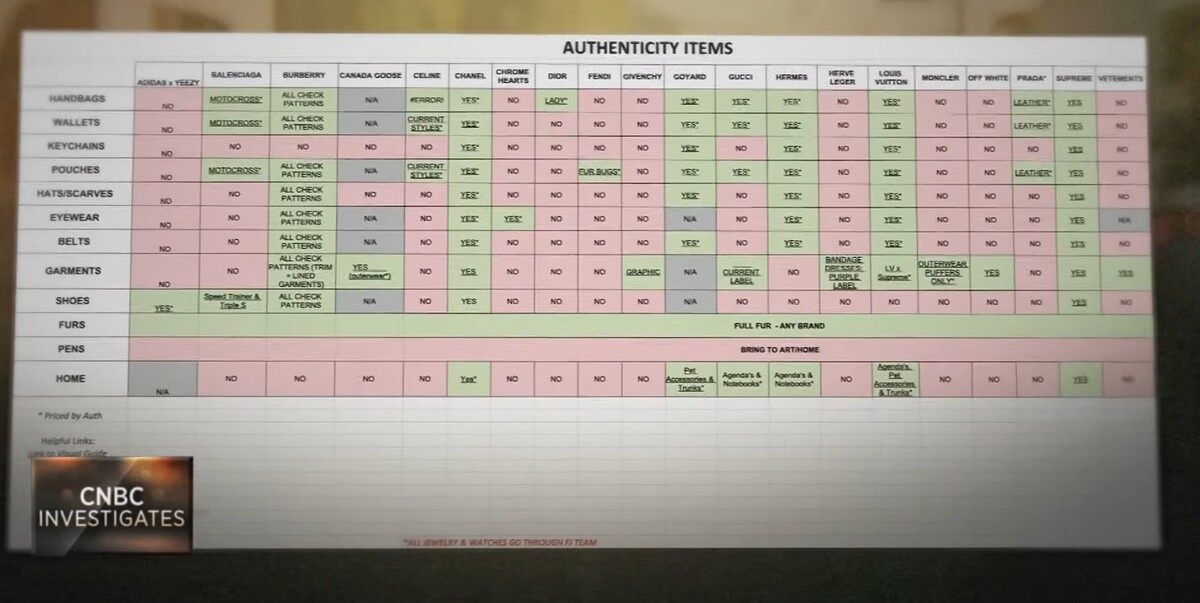
Emily Bobb, also a former employee, joins her: “We had slideshows which helped you authenticate an item. We had such a big number to hit every single day. (...) And all you focused on is, ‘I have to hit this goal, so I could be good for the month.' "
According to Realreal's internal document, updated on February 1st, 2019, copywriters were disciplined if they did not meet at least 50% of the daily quota. Quotas also depend on the category in which the copywriter belongs. In the ready-to-wear category, it's 105 items in an 8-hour shift and 131 items within a 10-hour shift. The contemporary ready-to-wear collection was even more demanding - 128 items in 8 hours of work and 160 items in 10 hours of work.
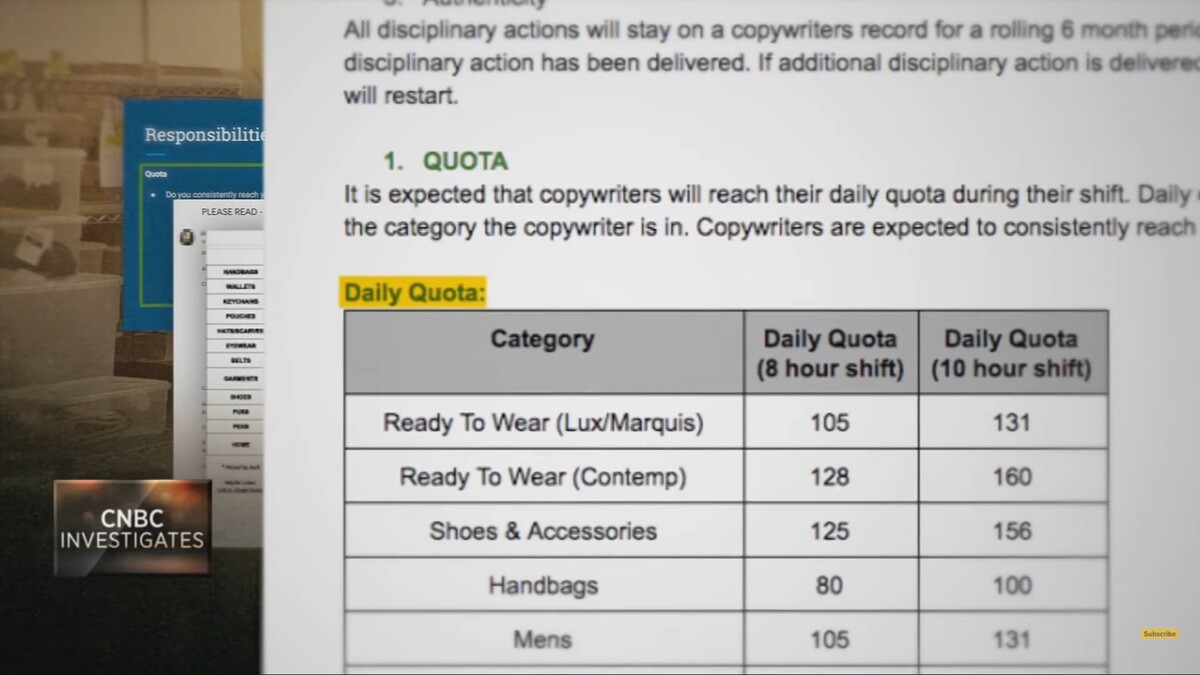
However, The Realreal stands by its strategy and states in a statement to CNBC: “We employ brand experts on staff, as well as hundreds of additional trained authenticators. (...) Our authentication team receives daily training updates to stay ahead of the latest developments from brands and counterfeiters. (...) We stand by our authentication process."
In 2016, Julie Wainwright, the founder of The Realreal, declared on the American television station: "There are no fakes on our site” and three years later: "Every single item was authenticated before it reached the website." The claim on the company's website that each item is 100% genuine, however, disappeared from the site on the same day the report was broadcasted on November 5th, 2019.
Authentication using copywriters is said to be nothing new. At least since 2015, when Greta Stehr, a former manager of The Realreal in L.A., was shocked by the authentication process she saw with her own eyes. "So instead of the top-tier authenticators taking a long time, a sufficient amount of time to review each piece, most pieces were being handled by the copywriters, and only very, very high-value items, it seemed, were being authenticated by the actual lead authenticators."
The main face of The Realreal, and one of the most famous authenticators Graham Wetzbarger, has ended his cooperation after 7 years of working for TRR. However, he denied the connection to CNBS's revelations. For many years, he appeared in TRR videos explaining the steps of the review process and reassured potential customers that all items on the web were verified and genuine.
Wetzbarger expressed his opinion a few days after the publication of the report in the episode Sady Says by moderator Natalie Sady. "The report showed the complaints and concerns of several people. (...) I can say for myself that I am very confident and proud of the work that the company continues to do. (...) However, seven years is a long time, perhaps too long in any company. (...) I want to start working for myself and other companies. "
However, former TRR authenticator Graham Wetzbarger wonders why people think the term 'many' automatically means 'majority'. The CNBC report does not mention the percentage of fakes sold by The Realreal, which Wetzbarger comments, saying that no company would ever speak of such numbers. At the same time, he claims that no one is fully one hundred percent in anything.
Julie Wainwright, the Director of the reselling company The Realreal, also admitted this. In Mad Money, CNBC confirmed the moderator's words that no one is perfect, but added that they strive to be perfect every day. She described their operation of authentication processes in the November report as outdated and explained how it is allegedly working today.
"When we started the business, copywriters just wrote the texts for products, later joining the work of authenticators, going through 30 hours of training. (...) The work of a copywriter is changing dramatically even at this moment. We and our control processes are also changing. We now use a combination of technology and artificial intelligence. So that the copywriters won't have to check or write anything."
Each story has two sides, and it seems that even the truth is not 100% in the end. What is certain, however, is that knock-offs are becoming increasingly difficult to detect, and the experts often have to break a sweat these days. On the day of CNBC's report, The Realreal's shares fell 11%, reducing its market value by $202 million.
"Our biggest group of customers and now consignors are now millennials. They’re hyper-conscious about sustainability and the impact on the environment of buy-new," said Julie Wainwright, addressing The Realreal's customers and the consumer preferences. According to a BCG report from three years ago, more than 50% of Z-Generation consumers have bought or sold things second hand.
The company sees a way to profit from the sale of used luxury pieces in an average of 35% share of each sale. The number is higher than on other platforms. For instance, compared to the 20% of eBay, The Realreal provides comprehensive customer service. They pick up the piece, prepare it for sale, sell it and resolve any complaints. The seller as a private person is exempt from all this and only deals with profit.
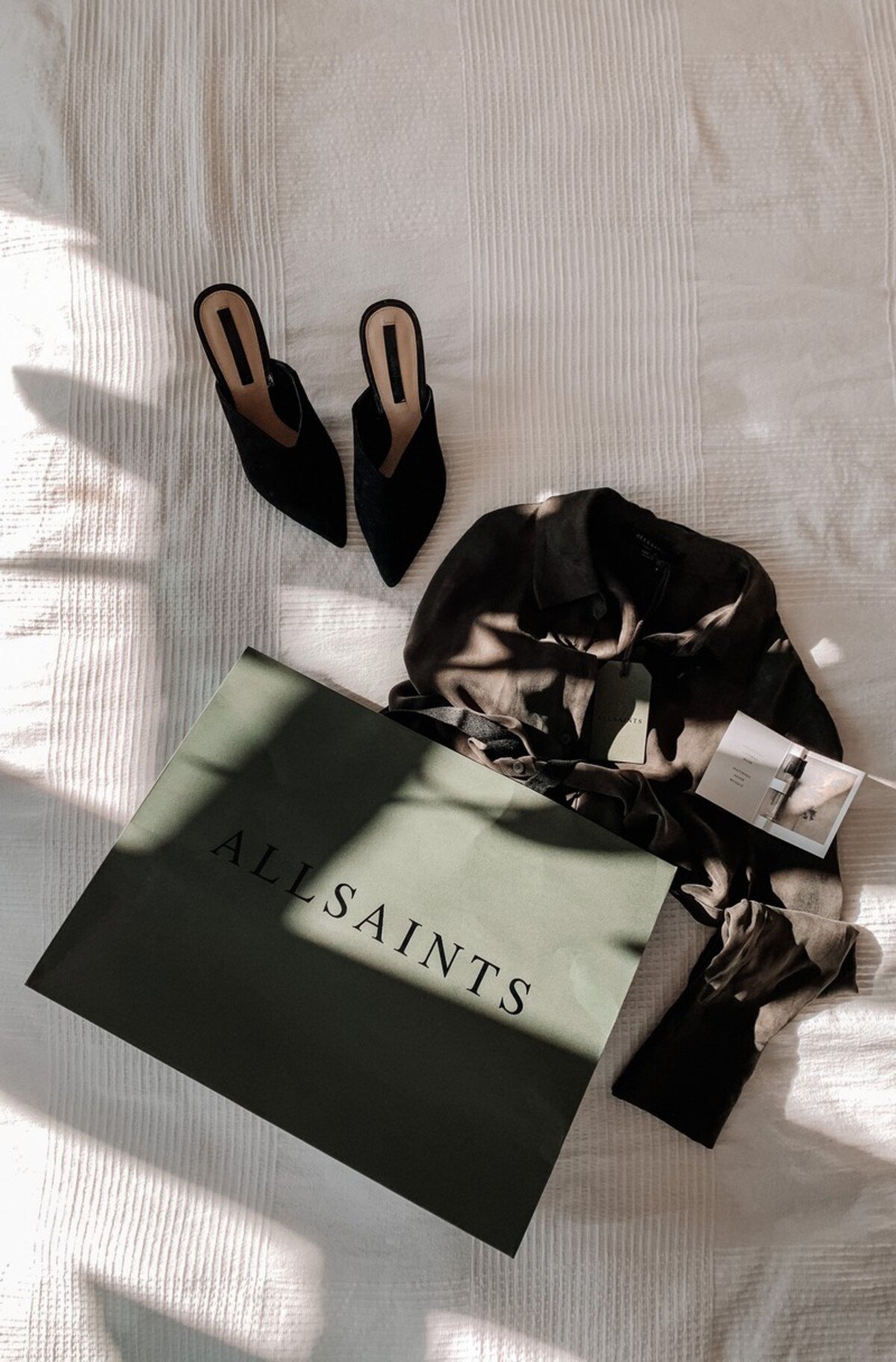
Emerging partnerships as the future of luxurious sustainability
Luxury fashion houses are also affected by the sustainability trend, which has significantly come to the forefront, especially in the recent years. Breathing a second life into quality things is slowly becoming a social duty of every seller. Brands like Stella McCartney, Gucci and Burberry are also realizing this.
"The Realreal has the same ambition to support the circular economy and keep clothes in operation for a longer time. We know that the enduring quality of Burberry pieces means that their appeal and value are long lasting. Through this new partnership, we hope to not only support a more circular future, but also encourage consumers to consider all the options available to them when looking to refresh their wardrobe,” says the fashion house's collaboration with the reselling company.
Another secondhand sales company is in a similar situation. Vestiaire Collective officially cooperates with luxury brands such as Alexander McQueen and Mulberry. However, they didn't manage to avoid scandals involving the sale of fake goods either.
The secret to "fake success" or why do we even buy them
First and foremost, owning a branded piece makes people feel like they belong to a higher class. On top of that, there's the feeling of buying "luxury" at a good price. On the other hand, there are allegations that counterfeits damage the reputation of luxury brands and are considered to be organized crime.
However, according to Professor David Wall, who has published a summary of counterfeit research in the British Journal of Criminology called Jailhouse Frocks, some claims may not be substantiated. His research has shown that people who buy a knock-off can later become customers of a real luxury brand, and thus fakes can be the first step towards loyalty to the real brand later on.
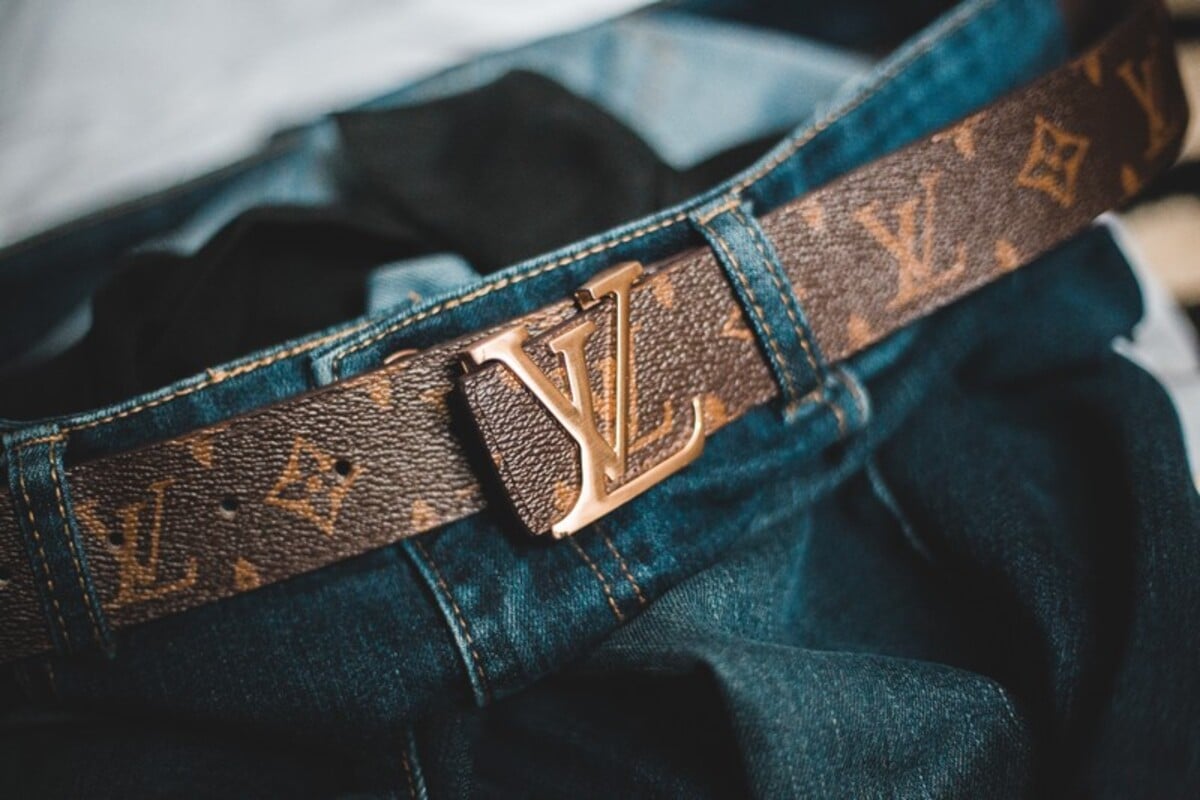
A consumer survey by Incopro, conducted on a sample of 2,000 respondents from the USA last year, has showed that the protection of brand authenticity is a critical element and the customers are aware of it. "Our research has demonstrated, not only that brand authenticity is vital to consumers, but also that many consumers view this area as the brand's responsibility," said Piers Barclay, Head of Strategy at Incopro.
Two-thirds of surveyed consumers believe that brands are responsible for protecting shoppers from fake versions of their products sold online. In addition, 77% of consumers surveyed believe that brands are responsible for reporting fake social media accounts that impersonate them, and as many as 71% believe that brands should fight their rip-offs more.
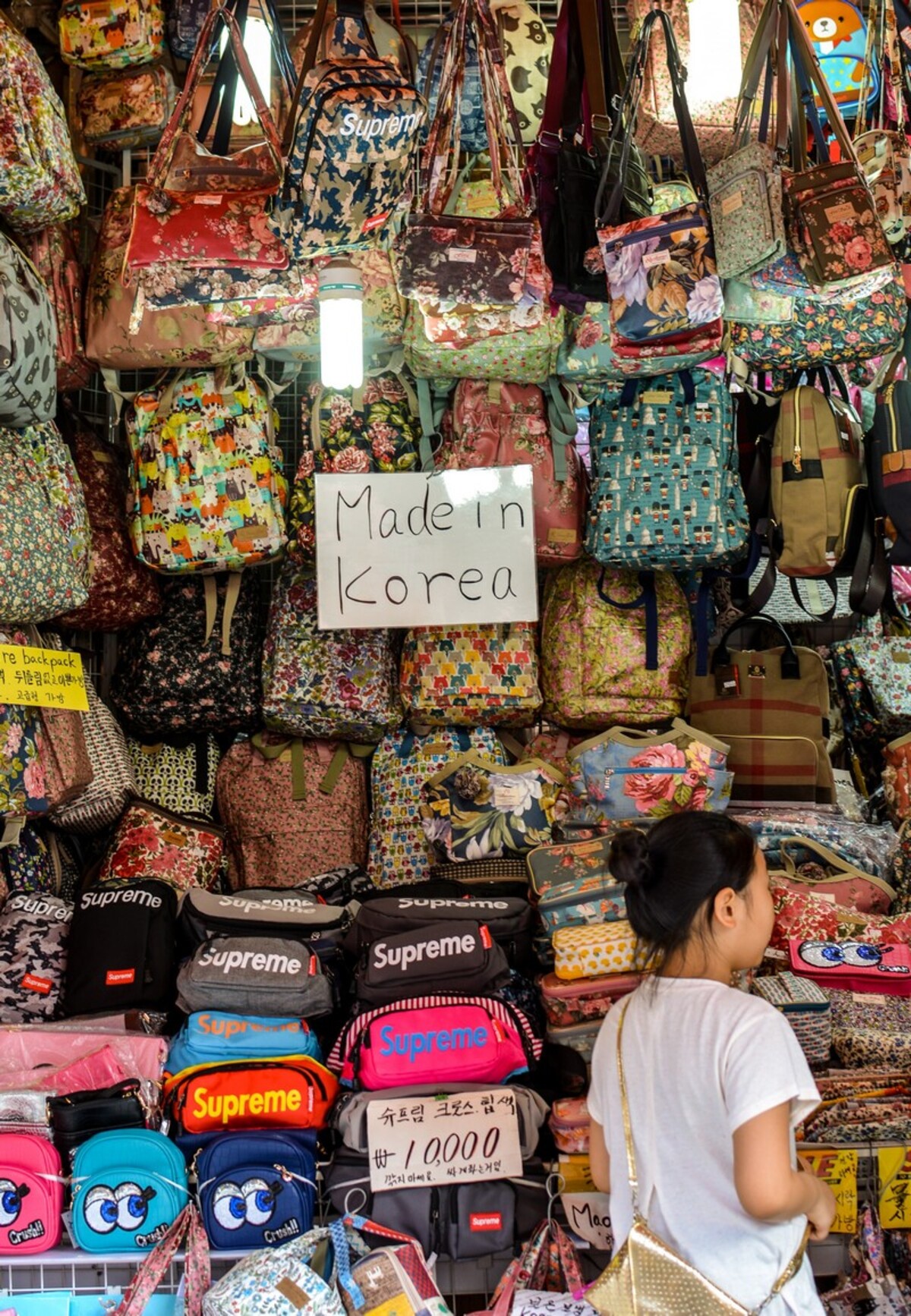
However, the fight against the sale of counterfeit goods is a long way off. The sale of fakes takes place largely on social networks and sites, where it is almost impossible to know the real identity of the seller. After reporting or cancelling one site, several more will be created instead. Factories mostly in China produce new fake branded things every day. It is very difficult to stop the business, which is considered a grey area within the country.
Expensive taste with an empty wallet
The latest trend that has overtaken the youngest generation is the purchase of a branded piece and the subsequent bragging on TikTok. Young consumers want to wear things like Gucci, but they don't want to pay for them. Under the hashtag #dupes, there's a huge number of videos that show or advise where to buy indistinguishable fakes from the real thing. Most often these are Amazon or DHgate sites.
Jason Dorsey, the President of the Center for Generational Kinetics in Austin, Texas, explains this phenomenon to CNBC by saying that Generation Z has seen its parents worry about finances and therefore tends to be more careful with money. It is also the generation that grew up with the media and social networks and is the most photographed of all generations. Appearance is therefore important, and the purchase of clothing is related to that as well. Buying cheap means buying more. And this also applies to fake brands, which also give a fictitious feeling of superficial luxury.
@darcymcqueeny dhgate was a 10/10🤍 ##dupes ##dhgate ##designer ##fyp ##shopping ##louisvuitton ##gucci #designerdupes ##dhgateunboxing ##dhgatefinds ##haul ##onlineshopping
♬ Lofi - Domknowz
But how should luxury brands defend themselves against such promotion of fake luxury? The issue of supporting and recommending the purchase of fakes through certain websites is relatively new on this network. Other social networks have similar problems with posts of this sort. However, this has been the case so far and it is likely to keep happening.
The solution could be a new luxury brand strategy aimed at the youngest generation. The market will change over time and the values of inclusivity and sustainability are not associated with luxury brands by generation Z. Either these brands lower their prices or establish partnerships with other companies that target the young customer. One example is the investment of the LVMH conglomerate in the Madhappy streetwear brand.
App for fakes?
The Rebag platform offers a downloadable app called Clair AI, thanks to which you will know the true value of your handbag almost immediately. If you want to sell it straight away, Rebag guarantees that you get the price stated in the application. At the moment, it can recognize more than 15,000 bags of the top 50 luxury brands and their prices with 91% accuracy.
Charles Gorra, founder and CEO of Rebag, has been working on the application for 7 years. "We made it free for anyone to use because we hope that lots of people will use it, whether or not they eventually choose to use Rebag. All of this data helps us to improve the app and also see what bags people are interested in.”
So can this application also recognize fake handbags? It was not primarily created for this, but when taking a picture of a fake handbag, the app should reject the photo. If it's a really compelling fake piece that someone tries to sell through the app (and Rebag authenticators really confirm it's a fake), the purse will be rejected and sent back.
However, it is definitely a big step forward in investing even for beginners or people less familiar with fashion. The app will surely help with estimating the current price of the handbag on the market. Unfortunately, fake goods will be around for many more years to come, if not forever. However, it is important to know how to detect it.
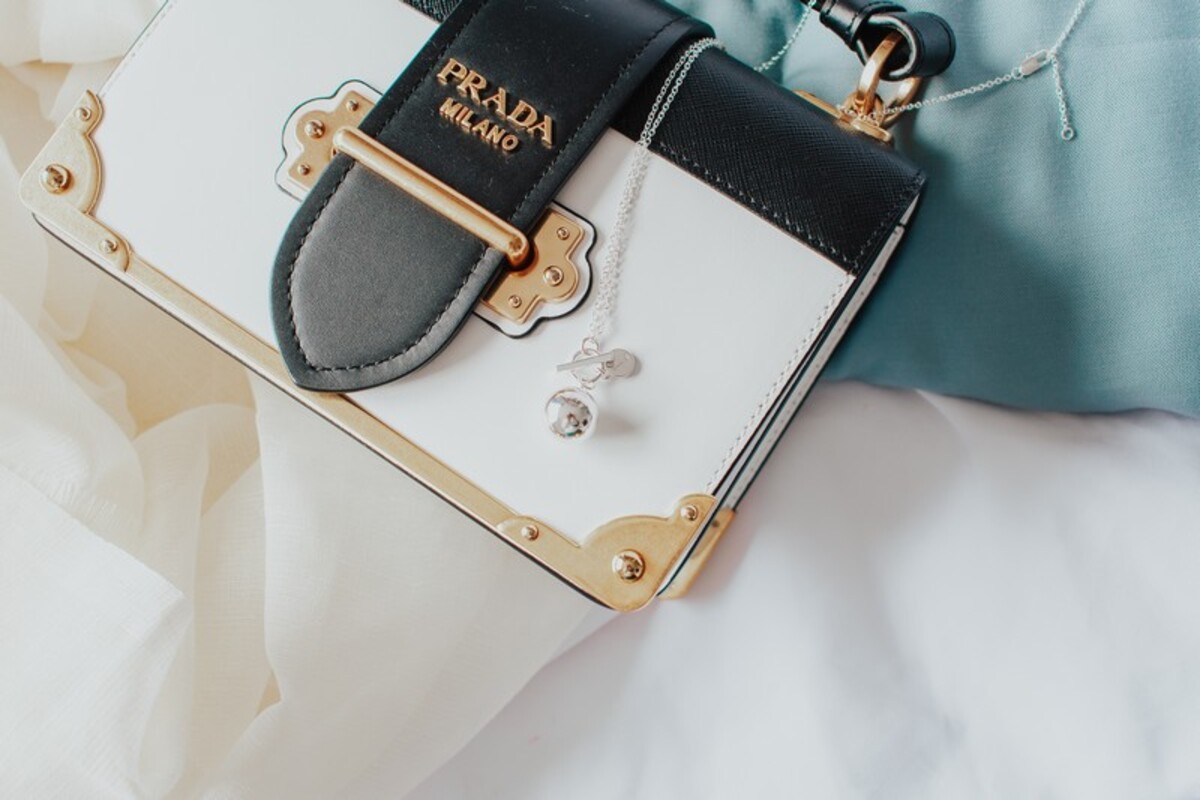
If you suspect that you have been deceived during a sale on the Internet, you can turn to sites that provide authentication services. For instance, the Proauthenticators website focuses on Louis Vuitton handbags and accessories, but Realauthentication covers multiple brands and, in addition to handbags and accessories, also verifies shoes, watches and clothing.
If you'd like to get into the verification yourself, here are a few tips to pay attention to:
2. Style and shape (fake bags can be offered in sizes and shapes that were never made by the original luxury brand)
3. Quality material (genuine leather is soft and supple - unlike fake leather, which is of poor quality and can smell like plastic)
4. Color (the execution of counterfeits in the original luxury presentation sometimes doesn't even exist)
5. Sewing evenly and perfectly in every direction (fakes are imperfect, threads stick out of them and stitching is uneven)
6. Metal parts and the mark of production (metal plate and the printing of the brand name / place of production should be perfect and distinctive. To recognize real from fake at this point is in some cases only possible via detailed comparison)
7. Serial number (if a luxury brand offers such a verification service, this seems to be the easiest way to verify the piece, but this parameter does not guarantee authenticity, as many counterfeit items have production date codes)
If problems persis, please contact administrator.




